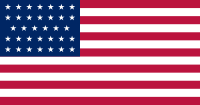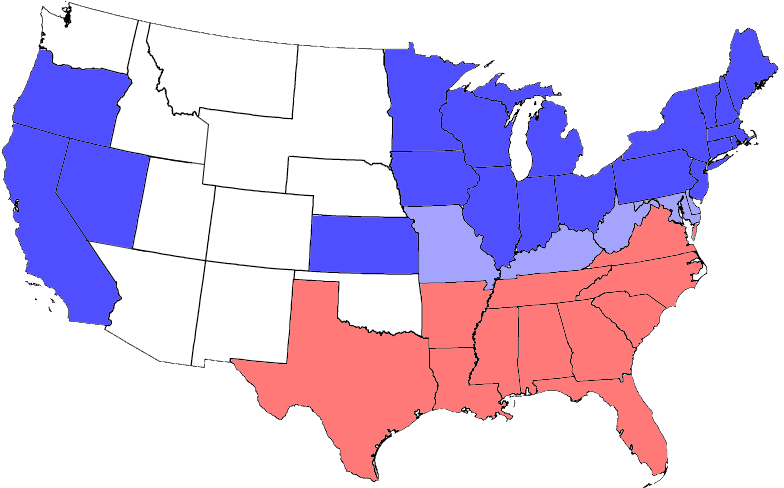The American Civil War occurred from 1861 to 1865, corresponding with the presidency of Abraham Lincoln. The war consisted of the Union (or the North) fighting against forces of the Confederate States of America (or the South).

The Union flag at the time of secession.
There are severalfactors historians can point to as causes or contributors to the Civil War, but every single one has a common denominator: slavery.
Three of the main contributors to the Civil War are the following¹:
- States’ rights: specifically, states’ rights to slavery.
- Differing economic systems: specifically whether or not those systems should include slavery.
- The election of Abraham Lincoln: specifically how it would affect slavery.
Although the Civil War was undoubtedly about slavery, Lincoln downplayed the influence of it and claimed the war was just about preserving the Union in the beginning of the war.¹
The Union had clear and massive advantages over the Confederates. In just sheer numbers, the Union had 22 million citizens and the South had 9 million, 3.5 million of which were slaves. The North was manufacturing 90%+ of all goods in America.¹ The Confederates had half the railroad the Union had, making it difficult to move their army. The only advantage the South had were their notable military leaders.
A northern general named Ulysses S. Grant is famous for being willing to sustain enormous casualties to bring down the South. Despite losing 52,000 of his men in the Battles of the Wilderness, he was the Union’s most successful leader.¹
There were two important turning points in the Civil War¹:
- July, 1863; a month that saw two of the most important Union victories. In the western theatre, General Grant captured Vicksburg, Mississippi, giving him control of the lower Mississippi river. In the eastern theatre, the Battle of Gettysburg shifted the tide of the war in favour of North and Confederate forces would never again threaten a northern city.
- August, 1864; the month when the Union’s General Sherman took Atlanta. This was extremely politically significant, happening immediately before the election of 1864. The election was the last possible time the Confederates could have taken the war.
It is important to note that not all of the states that held slaves were Confederate. Kentucky, Missouri, Delaware and Maryland were all critical to the Union and were also slave states.¹
There was somewhere between 680,000 to 800,000 casualties in the Civil War, making it deadlier for Americans than the American Revolution, WWI, WWII and Vietnam combined.¹ Despite this loss, the Civil War is definitely one of the most integral moments of American history.
This Civil War map illustrates the Union, Confederacy states as they were in 1864. All of the blue states are Union States, the red are Confederate slave states and the light blue areUnion slave states.
References:
1. http://www.youtube.com/watch?v=rY9zHNOjGrs
2. http://commons.wikimedia.org/wiki/File:USA_Map_1864_including_Civil_War_Divisions.png
© BrainMass Inc. brainmass.com April 18, 2024, 10:19 am ad1c9bdddf
